In the ever-accelerating realm of technological innovation, the symbiotic relationship between Data and Artificial Intelligence (AI) has become the linchpin for sustainable growth and competitive advantage. Within this dynamic landscape, Natural Language Processing (NLP) has emerged as a focal point, a catalyst for reshaping how machines understand and interact with human language. This post aims to provide a thorough exploration of the benefits of integrating Data and AI, with a keen focus on the strides made in language understanding through Deep Learning techniques.
Unveiling the Depths of Deep Learning in NLP
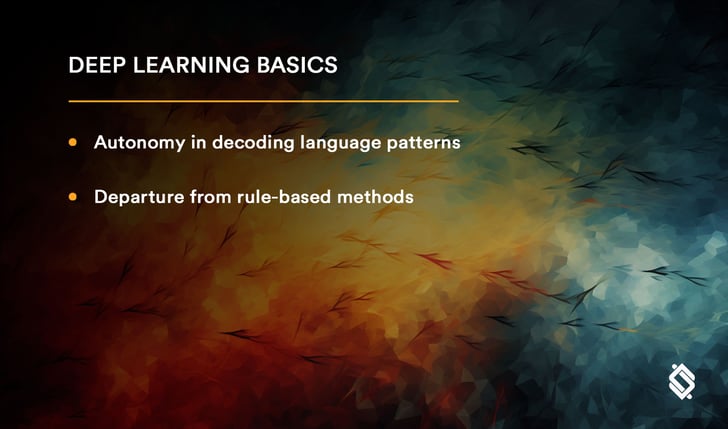
As technology continues its relentless evolution, the infusion of Deep Learning into NLP has marked a watershed moment. This paradigm shift transcends traditional rule-based approaches, ushering in an era where machines can autonomously decipher intricate linguistic patterns and representations from vast datasets. In this expansive journey, we delve into the profound benefits that await tech leaders ready to embrace the synergy of Data and AI.
Transformer Architectures: A Symphony of BERT and GPT
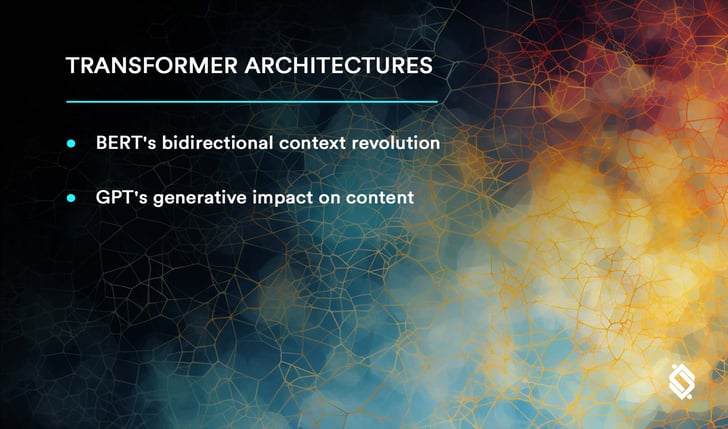
Within the labyrinth of Deep Learning, two trailblazing architectures—Bidirectional Encoder Representations from Transformers (BERT) and Generative Pre-trained Transformers (GPT)—stand out as beacons illuminating the path to unparalleled language understanding.
BERT: Redefining Contextual Representations
The genesis of BERT by Google in 2018 revolutionized language understanding by introducing bidirectional context into language models. Departing from the traditional unidirectional approaches, BERT considers the entirety of a sentence, enabling a nuanced comprehension of language nuances. This bi-directionality, a hallmark of BERT, empowers applications like sentiment analysis with unprecedented accuracy.
GPT: Crafting Narratives Through Generative Intelligence
In contrast, OpenAI's GPT takes a generative leap, predicting the next word in a sequence based on contextual antecedents. This generative prowess facilitates creative language generation, finding applications in content creation, automated customer support, and beyond. GPT's ability to understand and generate coherent, contextually relevant text has opened up new dimensions in human-machine interaction.
Illuminating the Landscape of Language Understanding
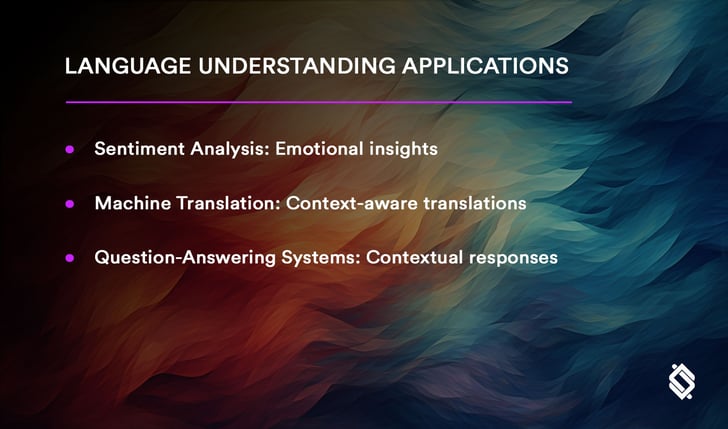
Sentiment Analysis: Decoding the Emotional Tapestry
Deep Learning models, fueled by transformer architectures, have redefined the landscape of sentiment analysis. No longer confined to a superficial analysis of language, businesses can now discern not just what is being said but also the underlying emotional context. This level of granularity not only refines customer satisfaction metrics but also contributes to product improvement and brand perception management.
Machine Translation: Bridging Linguistic Chasms
GPT and BERT, with their contextual understanding, have spearheaded a renaissance in machine translation. Beyond mere linguistic conversion, these models comprehend the subtleties of context, delivering translations that are not just accurate but also culturally and contextually nuanced. For global enterprises, this capability is a linchpin for breaking down language barriers and fostering seamless communication.
Question-Answering Systems: Elevating User Interaction
Deep Learning's imprint on question-answering systems is transformative. Whether embedded in customer support chatbots or powering search engines, transformer-based architectures ensure responses that are not only accurate but also contextually relevant. The net effect is an elevated user experience, with profound implications for user engagement and satisfaction.
Navigating the Complexities: Challenges in Language Understanding
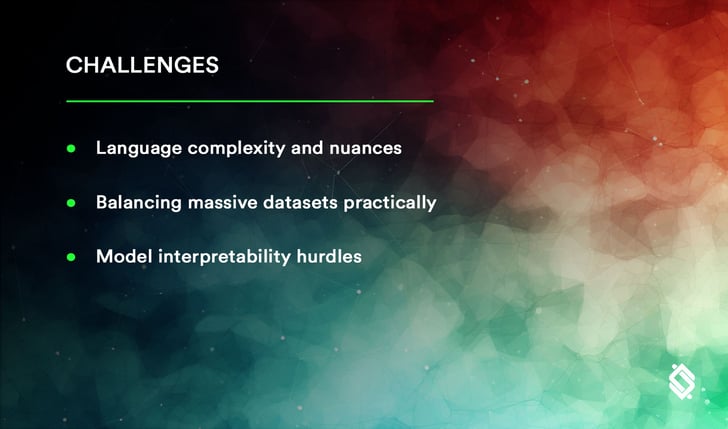
The voyage into the world of Deep Learning in NLP, while promising, is not devoid of challenges. The intricacies of language, the insatiable hunger for massive datasets, and the opacity of model decision-making pose substantial hurdles for tech leaders navigating these uncharted territories.
The Complex Tapestry of Language
Human language, with its multitude of nuances, idioms, and cultural references, poses a formidable challenge. Teaching machines to unravel the intricacies of human expression demands ongoing refinement of models to keep pace with the evolving nature of language.
Dataset Dilemmas: Striking a Balance
The effectiveness of deep learning models in NLP hinges on the availability of extensive datasets. While large datasets contribute to model robustness, their acquisition and management present logistical challenges. Tech leaders must navigate the delicate balance between the need for voluminous data and the practicalities of ethical data collection and storage.
The Enigma of Model Interpretability
The opacity of deep learning models, often criticized as 'black boxes,' poses challenges in terms of interpretability. This lack of transparency not only raises ethical concerns but also impedes the widespread adoption of AI systems. Addressing this conundrum requires concerted efforts in research and development to enhance model interpretability.
Orchestrating the Future: A Call to Action for Tech Leaders
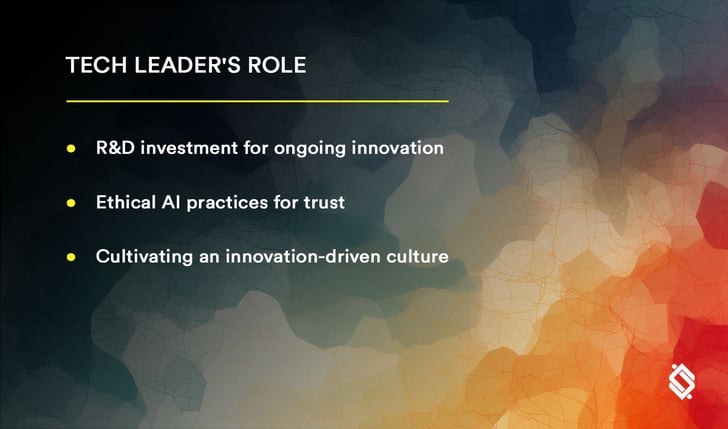
The transformative power of Deep Learning in NLP beckons tech leaders to orchestrate a future where language understanding is not merely a capability but a defining competitive advantage. While challenges loom, the potential benefits are too profound to ignore.
Fostering a Culture of Continuous Innovation
Innovation, fueled by a culture of experimentation and creativity, is the lifeblood of technology companies. Tech leaders must nurture an environment that encourages teams to explore new approaches, embrace failures as learning opportunities, and chart innovative paths in the rapidly evolving field of language understanding.
Ethical AI: A Non-Negotiable Imperative
As stewards of technological advancement, tech leaders must prioritize ethical AI practices. Responsible data collection, usage, and disposal, coupled with transparent AI decision-making, form the bedrock of building trust among users and stakeholders. In navigating the complexities of language understanding, ethical considerations are not optional but imperative.
Investment in Research and Development
To remain at the vanguard of language understanding technology, tech leaders must allocate resources for continuous research and development. This entails active collaboration with the broader AI community, staying abreast of the latest advancements, and contributing to the evolution of NLP.
Nurturing the Language Revolution: Conclusion

In conclusion, the integration of Data and AI, particularly through the prism of Deep Learning in NLP, represents a revolutionary stride for technology companies. BERT and GPT, as torchbearers of this linguistic evolution, have not only redefined our understanding of language but have also paved the way for a future where language becomes a conduit for unprecedented human-machine synergy.
While challenges persist, they are not insurmountable. Tech leaders who embrace this journey, invest in research, prioritize ethics, and foster innovation, will position their organizations at the forefront of the language understanding revolution. The capacity to decipher the intricacies of human language is no longer a luxury but a strategic imperative. The future is calling, and it speaks the language of technological evolution. The time for action is now.



